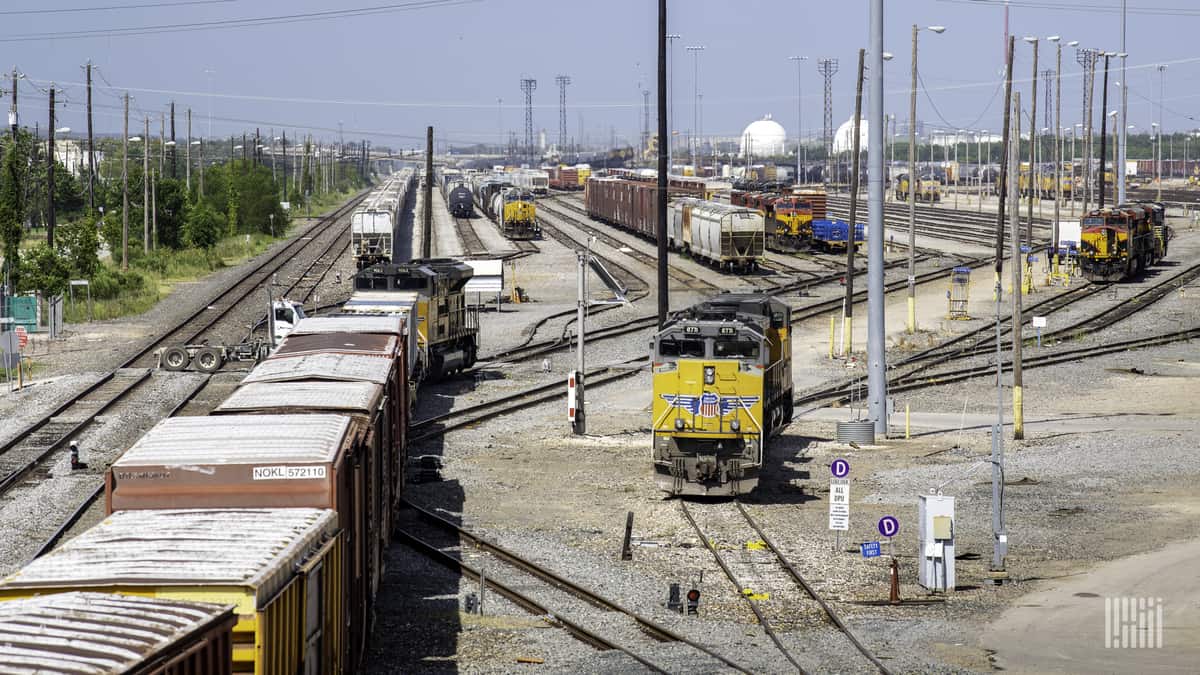U.S. rail volumes took a hit last week from the extreme winter weather experienced in the southern and central regions of the country.
Overall U.S. rail traffic for the week ending Saturday slipped 21.7% to 377,904 carloads and intermodal units, according to the Association of American Railroads. Of that, carload traffic tumbled 26.3% to 171,642 carloads, while intermodal volumes fell 17.4% to 206,262 containers and trailers.
All carload categories fell year-over-year last week. The steepest decline went to nonmetallic minerals carloads, which dropped 46.1% to 16,088 carloads. Grain carloads fell the least, decreasing only 0.5% to 18.860 carloads.
Nonmetallic minerals carloads have been facing sluggish demand since the start of 2021, with year-to-date volumes down 19.5% year-over-year to 164,672 carloads. In contrast, grain carloads are 30% higher year-to-date to 177,674 carloads amid strong export demand.
“This has been no ordinary winter storm (it’s the worst on record dating back 18 years of data keeping), both in terms of geographic breadth and impact across modes. In fact, it has been a historic week since it will shape Texas power policy going forward,” said FreightWaves analyst Tony Mulvey in a Feb. 18 FreightWaves Passport research note. “Also extraordinary is the coverage of the adverse weather conditions blanketing ~75% of the population with snow.”
Indeed, domestic intermodal volumes in particular took a hit because Chicago and Dallas have far more intermodal outbound domestic loads than outbound international loads, Mulvey said in a Wednesday FreightWaves Passport research note.
To illustrate the market tightness, domestic door-to-door intermodal spot rates were higher in the past week in 19 of the 20 densest lanes, mostly on top of rate increases the prior week, Mulvey said. In many of the densest lanes, intermodal spot rates are up 60% in the past two weeks. Those rates, combined with still-challenged service levels, may push more domestic freight to the highway, he said.
Subscribe to FreightWaves’ e-newsletters and get the latest insights on freight right in your inbox.
Click here for more FreightWaves articles by Joanna Marsh.
Related articles:
Railroads grapple with delays as intermodal terminals open
Rail Roundup: FreightCar America names new CFO; US rail volumes flat
What does a tight US housing market mean for rail?
Intermodal, chemicals and grain boost US rail traffic in January










